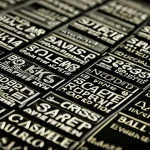Traditional Cornish Pasty: History and Key Elements
The traditional Cornish pasty traces back to Cornwall’s mining heritage, where it served as a hearty, portable meal for miners. Its Cornish pasty history is deeply tied to working-class culture, offering sustenance wrapped in a durable pastry that miners could easily carry.
At its heart, a traditional Cornish pasty features a specific set of classic ingredients. The filling typically includes diced beef, swede (rutabaga), potato, and onion—all encased in a thick, hand-crimped shortcrust pastry. This combination balances robust flavors with earthy textures, designed to endure lengthy cooking times without becoming soggy. The beef provides a savory, rich element, while the swede and potato add subtle sweetness and earthiness.
Additional reading : How do you achieve the perfect balance in a bubble and squeak dish?
The classic preparation involves chopping ingredients evenly and mixing them with a bit of seasoning before placing them onto pastry circles. The pasties are folded carefully, crimped by hand to seal in juices, and baked until the pastry becomes golden and flaky. This method ensures the filling cooks evenly and the pasty remains structurally sound, maintaining its role as a practical and flavorful meal.
Modern Twists on the Classic Cornish Pasty
Exploring the modern Cornish pasty reveals a wealth of innovative pasty fillings that honor tradition while embracing creativity. While the classic Cornish ingredients remain iconic, chefs and home cooks alike are experimenting with international spices like cumin, smoked paprika, and curry powders to add depth and intrigue. These spices transform the flavor profile, breathing new life into the familiar.
In the same genre : How do you make a classic Eton mess dessert?
Beyond seasoning, unique vegetables such as roasted butternut squash, kale, and caramelized shallots have found their way into contemporary pasty recipes. These additions not only enhance taste and texture but also appeal to a wider audience seeking fresh experiences. The rise of dietary preferences has also inspired adaptations, with many opting for vegetarian and vegan options that substitute beef with hearty mushrooms or lentils, and gluten-free pastry alternatives.
This flexibility illustrates how the modern Cornish pasty retains its cultural roots while evolving. Importantly, incorporating spices and novel ingredients does not lose the pasty’s essence but rather complements the traditional Cornish pasty framework by expanding its culinary reach. The result is a contemporary pasty recipe that respects history and satisfies modern taste buds.
Step-by-Step Recipe: Crafting a Cornish Pasty with a Modern Twist
Creating a Cornish pasty recipe that bridges tradition and innovation requires clear, detailed steps. Start with preparing the classic ingredients: diced beef, swede, potato, and onion. For a modern pasty tutorial, consider adding roasted butternut squash or mushrooms as inventive fillings. Use cold butter and flour to make a sturdy shortcrust pastry, essential in holding the filling’s juices.
First, roll out the pastry to a consistent thickness, about 3-4 mm, then cut into large circles, typically 20-25 cm in diameter. Place the prepared filling onto one half of the circle, ensuring even distribution without overcrowding. To seal, fold the pastry over and hand-crimp along the edges—a method dating back to the traditional Cornish pasty’s origins, crucial for preventing leaks during baking.
Bake the pasties at around 200°C (400°F) for 35-40 minutes until the pastry turns golden and flaky. For a modern twist, brush the pastry with a plant-based milk wash for a glossy finish without eggs. This step-by-step approach balances respecting classic Cornish ingredients while encouraging creative, personalized flavor combinations.
Tips for Perfecting Your Modern Cornish Pasty
Mastering authentic Cornish pasty tips ensures your creation delivers both tradition and contemporary appeal. Achieving a crisp, flaky pastry relies heavily on handling the dough correctly: keep the butter cold and avoid overworking the pastry to maintain light layers. Rolling the dough to an even thickness, about 3-4 mm, ensures even baking and structural integrity.
For pasty baking advice, preheat your oven to a consistent 200°C (400°F) and bake until the pastry is golden—typically 35-40 minutes. This timing allows the filling to cook thoroughly while preventing sogginess. Brushing the pastry with plant-based milk before baking adds a modern touch, giving a glossy finish without altering flavor profiles.
Balancing flavors is crucial for a modern Cornish pasty: the filling should have a contrast of savory-rich meats or mushrooms paired with subtle sweetness from vegetables like swede or caramelized shallots. Incorporating spices such as smoked paprika or cumin enhances depth without overwhelming the classic profile.
For modern presentation, consider serving pasties with fresh herbs or a side of tangy chutney to elevate the dish visually and taste-wise. Small adjustments in technique and plating can transform a simple pasty into a sophisticated culinary experience.






